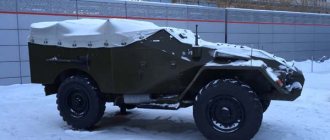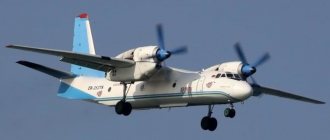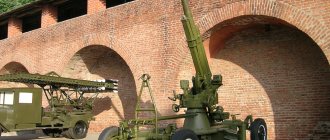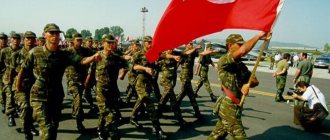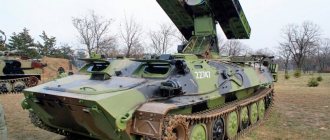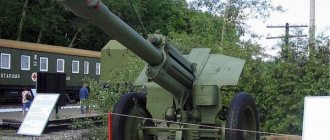Despite the fact that military equipment has been significantly modernized in recent years, mortar weapons still remain the main weapon for any military unit. In general, this is due to the fact that when developing these weapons, the developers managed to combine high fire efficiency with low cost. This weapon is best suited for providing fire support to infantry, especially in cases where combat operations are carried out in inaccessible terrain with difficult terrain.
Types of mortars
The most popular in the military industry was the 120 mm mortar of the 1943 model called PM-43, on the basis of which a large number of modern modifications were developed:
- 2B11 - standard version;
- 2B24 - a domestic modification that is significantly superior in fire performance to all imported analogues; 2B11 - modification, licensed under license in Bulgaria;
- 2S12 - is a mortar complex called “Sani”. Its design is represented by the 2F510 vehicle (GAZ-66 vehicle), on which the installation is transported, and the 2L81 wheel drive, intended for use with the standard version of the 2B11 mortar;
- 2K32 - 2B24 class mortar is located on an armored tracked base;
- 2B25 - used by special units. It has a number of advantages that allow it to carry out attacks in which the enemy cannot determine the location of the installation and, as a result, eliminate it. It is also available in the “Commandos” version with a firing range of up to 3 km and a total weight of the structure not exceeding 12 kg.
Simplicity and efficiency
Experts believe that the Sani, like other 120 mm mortars, remains in wide demand in the modern theater of operations. They are mainly used to destroy positions of illegal armed groups (IAF) in inaccessible mountainous areas.
Also on topic
“Shelling from different directions”: what the modernized Russian howitzer “Msta-SM” is capable of
By the end of 2020, more than 35 modernized Msta-SM self-propelled artillery units (SAU) will be delivered to the Russian army. About it…
As candidate of military sciences Sergei Suvorov told RT in a commentary, “Sleighs” are most often equipped with motorized rifle battalions. According to him, this complex is easy to operate and represents a convenient and effective weapon.
“Modernization of the Sled mainly concerns the quality of materials, improving sights, increasing maneuverability and improving ammunition. Modern projectiles are superior to their predecessors in range, power, accuracy and accuracy of fire. In addition, their range is expanding,” Suvorov said.
In a conversation with RT, military expert Alexey Khlopotov said that they have proven themselves well in the army along with other domestic mortars. According to the analyst, a 120 mm caliber gun, due to its greater power, allows it to perform a fairly wide range of tasks in the theater of operations.
“Of course, a transportable or portable mortar, compared to other artillery systems, is a fairly simple weapon, devoid of high-tech equipment. “Sleigh” did not undergo any major changes, but a number of innovations still appeared,” said Alexey Khlopotov.
- The "Sleigh" crew is preparing to fire from the 2B11 gun
As the expert explained, the Sleigh, along with other guns, is equipped with a safety ring that blocks reloading. This significantly increased the safety of the crew, which in battle can forget about the ammunition that did not fly out of the mortar. Devices for unloading and rolling the gun have also been improved.
“Previously, the crew could die if the second mine ended up in the mortar tube. Now such incidents are excluded. In addition, the reliability of the complex elements was increased. Now there is a tendency to install mortars on a vehicle chassis, which seriously increases their mobility. However, armored vehicles cannot travel everywhere, and therefore the need for transportable guns, such as “Sani”, and portable mortars will not disappear,” Khlopotov concluded.
Application 2B11
In the event that it is necessary to destroy or suppress the movements of infantry or enemy combat forces by mounted fire, a 120 mm mortar, the characteristics of which fully meet the stated requirements, will become an indispensable weapon. At the same time, its scope is very diverse. It can be used for shooting on steep slopes, mountain ranges, gorges, and forests. It is successfully used to destroy enemy trenches, trenches and various military structures of light construction. If necessary, it can be used to make holes in wire barriers or repel enemy attacks at any time of the day.
Main varieties of 120 mm mines used in 2B11
The performance achieved by the 120 mm mortar, the characteristics of which are indicated for 5 people, has been significantly improved in recent years at the Burevestnik Central Research Institute. Now the structure is transported on URAL-43206 vehicles and armored tracked MT-LB, allowing the accompanying crew to be guaranteed the maximum degree of protection.
Main mines used:
- high-explosive fragmentation with a weight of up to 15.9 kg;
- incendiary;
- smoke;
- lighting;
- propaganda
At the same time, the time that must be spent taking up a firing position if necessary is 8 minutes, and in order to leave it, it will take about 6 minutes.
Stability and speed
The "Sani" mortar is designed to engage enemy personnel and fire weapons located in engineering structures and hard-to-reach areas - for example, on reverse slopes and in deep gorges.
The destruction is carried out by 120-mm high-explosive fragmentation mines. If necessary, military personnel can use smoke, illumination and incendiary ammunition, as well as the KM-8 “Gran” guided weapon system, which allows you to destroy stationary and moving targets with the first shot without zeroing.
Also on topic
Accuracy, maneuverability and firepower: how is the development of the promising Koalitsiya-SV self-propelled howitzer progressing?
The first batch of self-propelled howitzers on the Koalitsiya-SV wheelbase is being tested at the Burevestnik Central Research Institute. According to experts, the new...
The mortar is transported in the back of a Ural-43206 off-road truck or towed. The weapon can also be transported by the MT-LB multi-purpose transporter-tractor. Unloading from the vehicle is carried out using a winch equipped with an electric drive. This greatly facilitates the crew’s work and reduces the time it takes to deploy the gun on the ground. The 2B11 is delivered directly to the firing line by wheel.
Preparing to fire from the Sleigh usually takes 1.5-2 minutes. The mortar is mounted on a special plate, which provides all-round firing from various soils, including hard and frozen ones.
“Thanks to the significant power of the mine, sufficient rate of fire, maneuverability, range and accuracy of combat, the modernized 120-mm mortar system 2S12A is capable of effectively and timely performing various tasks during combat operations,” says UVZ materials.
General Director of the Central Research Institute "Burevestnik" Georgy Zakamennykh calls the brainchild of the enterprise one of the world's best examples in this class of weapons. According to him, thanks to the Gran complex, the mortar is capable of hitting targets at a range of up to 9 km. He cited increased stability and towing speed as the advantages of the modernized “Sleigh.”
In an author’s article in the National Defense magazine, Zakamennykh said that the mortar complex received an improved all-round firing plate, a quick-release firing mechanism, a set of lighting equipment for firing in the dark that does not require recharging, as well as a number of other improvements. The safety of the calculation is ensured by a fuse of low mass and increased reliability.
“Due to the placement of the 2B11 mortar on modern wheeled (Ural-43206) and armored tracked (MT-LB) cross-country chassis, the mobility and security of the crew and ammunition have been increased. The mortar loading and unloading processes are mechanized thanks to the complex being equipped with an electric winch. This made it possible to reduce labor intensity, the time to deploy a mortar at a firing position, including a reduced crew, and the time to change positions,” Zakamennykh emphasized.
- Soldiers fire from a 2B11 gun
According to the Russian Ministry of Defense, the “Sleigh” showed high efficiency during combat operations in mountainous areas. During exercises and training, military personnel often practice shooting from indirect firing positions at maximum range at buried single and group targets.
To complicate the task of defeating a mock enemy, the military sets targets on hills and reverse slopes of mountains. To navigate the terrain, Sleigh crews must use only a map, compass and binoculars.
Russian troops are also mastering the tactics of “roaming” mortars, intended for defensive operations. It lies in the fact that the “Sleigh” crews are located not as part of platoons, but separately, and they constantly change positions. In this way, the enemy is deceived as to the system of fire and the number of forces available.
In addition, Sanya crews constantly practice interaction with units equipped with more powerful artillery systems - 122-mm Akatsiya self-propelled howitzers, 152-mm Msta-S and Msta-B guns, 122-mm salvo rocket systems fire "Grad" and 220-mm "Hurricane".
Start of production of modern mortars
The standard 120 mm mortar, the performance characteristics of which are completely based on the original model from the Second World War, was published in 1979 at the Burevesnik Central Research Institute (Nizhny Novgorod, Russia). It was named 2B11 and, having entered service in 1981, began to be mass-produced, during which time about 1,500 mortar guns of this type were produced.
Operators
- Belarus Belarus - 61 2С12 “Sani”, as of 2016
- Bosnia and Herzegovina Bosnia and Herzegovina - 23 2B11 (used under the designation UK-2), as of 2012
- Venezuela Venezuela - 48 2С12 “Sani”, as of 2016
- Georgia Georgia - 14 2С12 “Sani”, as of 2020
- Kazakhstan Kazakhstan - 45 2B11 and M-120, as of 2016
- Kyrgyzstan Kyrgyzstan - 6 2С12 “Sani”, as of 2016
- Libya Libya - a number of 2B11, as of 2016
- Lithuania Lithuania - 5 2B11, as of 2020
- Russia Russia: Russian Ground Forces - 1700 2S12 "Sani", (of which 1000 are in storage), as of 2020
- Russian Border Troops - 90 units 2S1, 2S9 and 2S12 “Sani”, as of 2020
- Ukrainian Ground Forces - 190 2S12 “Sani”, as of 2016
Combat use
- Second Chechen war.
- Armed conflict in eastern Ukraine - used by both sides of the conflict. [ not in source
]
2B11 mortar design
Essentially, a 120 mm mortar is a device with a recoilless design, installed using a biped and a breech with a support heel on a rigid plate. It acts as a support, which should be placed directly on the ground. Since charging is carried out only through the muzzle, and in combat conditions it is possible to lay a double charge, the first of which will serve as a fuse for the second, provoking an explosion directly in the muzzle of the mortar, most modifications of the 2B11 received a special mechanism at the muzzle that prevents such an action and, as a result, getting significant injuries.
Compared to the 1943 model, the 120 mm mortar, the characteristics of which have undergone significant changes, is cast from modern materials, which significantly facilitate its design and transportation. The design was equipped with a sight of the MPM-44M model, providing maximum accuracy at a distance from 480 to 7100 m. If necessary, the MPM-44 can be increased by more than 2°, providing a field of view of more than 9°.
Another important thing was the ability to transfer the 120 mm mortar, the photo of which is presented below, into a firing position in less than 2 minutes, which significantly saves time on firing a shot in the event of an unexpected enemy attack.
In the case when the 2B11 is used in an area where the 2F510 vehicle cannot pass, the mortar is mounted directly on the tracked chassis, significantly facilitating the transportation of the gun.
Description
The 2B11 mortar is a development of the design of the regimental mortar of the 1943 model - PM-43. The main innovations were the use of more modern materials, which made it possible to reduce the total weight of the mortar. Loading is done from the muzzle side. The mortar is made according to the classic imaginary triangle design. The breech rests on a special base plate. The slab and biped are installed in the ground. To prevent double loading, some modifications have a special mechanism installed on the muzzle. The modern modification 2B11 has the ability to fire almost all types of artillery mines of 120 mm caliber, including guided artillery mines KM-8 "Gran", in addition, the time to bring the mortar into firing position has been reduced from 20 minutes to 1.5...2 minutes. The 2B11 mortar can be used as part of the 2S12 “Sani” mortar system using wheels for towing, and can also be installed on tracked chassis.
In 2020, the Kiev State Design Bureau "Luch" presented a 120-mm guided mine for the 2B11 mortar ( 120-mm precision mine "Navis"
).
Mortar 120 mm performance characteristics
The 2B11 mortar can fire all kinds of mines with a caliber of 120 mm. Even guided mines of the KM-8 “Gran” category belong to this category; by this fact alone one can properly judge the combat characteristics that the 120 mm mortar shows. Feedback from military personnel about this weapon also allows us to judge the maximum firing range, which is about 7500 m when loaded with conventional weapons.
The total weight for all modifications, including the 2B11 itself, is 210 kg, allowing for more than 15 rounds per minute with an initial charge speed of at least 325 m/s. The design of the barrel with a length of 1740 mm provides a vertical guidance angle ranging from +45° to +80°. Horizontal indicators fluctuate within ±5°, maintaining sighting indicators of 360° with a horizontal firing angle from 5° to 26°.
Performance characteristics of 2K32 Deva
— Chassis type: MT-LB (MT-LBM1) - Years of operation: since 2011
— Crew: 6 people
Weight 2K32 Virgo
— Combat weight, t: 11.3
Overall dimensions 2K32 Deva
- Body length, mm: 6500 - Width, mm: 2865 - Height, mm: 1950 - Base, mm: 3700 - Track, mm: 2500 - Ground clearance, mm: 395..415
Reservation 2K32 Virgo
— Armor type: bulletproof
Armament 2K32 Virgo
- Caliber and brand of gun: 82-mm 2B24 - Gun type: smoothbore mortar - Gun ammunition: 84 - VN angles, degrees: +45..+85 - GN angles, degrees: 360 - Machine guns: 1 x 7.62 -mm PKT or 1 x 12.7 mm KORD
Firing range 2K32 Virgo
- 3VO36 round with 3-O-26 fragmentation mine: 6000 m - 3VO1 round with O-832 DU fragmentation mine: 3922 m - 3VO18 round with 3-O-12 fragmentation mine: 3922 m - 3VO12 round with 3-O fragmentation mine -12: 3107 m
Engine 2K32 Deva
— Engine type: YaMZ-238V
Speed 2K32 Virgo
— Highway speed, km/h: 60 - Cross-country speed, km/h: 35 (6 afloat)
— Suspension type: independent torsion bar; Fording, m: floating
Basic data
The 120 mm mortar, whose destruction radius when firing guided mines reaches 9000 m, is by far the most effective weapon for suppressing enemy firepower and covering the movement of infantry units.
Firing is carried out using mortar rounds with GVMZ-7 class fuses and a variable charge. It is noteworthy that the 2F510 vehicle (GAZ-66 car) with a V-shaped 8-cylinder engine, in which the 2B11 is transported, can transport with it only a strictly defined supply of charges, placed in 24 boxes. The ammunition is designed to fire 48 shots, which can be fired by a 120 mm mortar. The characteristics of the device allow loading and unloading 2B11 into the body of a car without the use of heavy equipment.
If for some reason there are not enough people to carry out this procedure, the mortar is transported in tow. At the same time, the 2F510 engine is gasoline and belongs to the ZMZ-66-06 class, the power of which reaches 120 hp. With. In this case, the maximum permissible speed on the highway is 90 km/h.
If a vehicle with a mortar launcher must ford a river, preliminary measurements will have to be taken for the vehicle to pass normally. In the deepest place, the maximum permissible water level should not exceed 1 m.
The brake system is equipped with a hydraulic drive with several circuits and hydraulic vacuum boosters on each of them. These factors make it possible to ensure reliable transportation of the 2B11 even in difficult combat conditions. The only weakness of the 2F510 is the dependent suspension on polyelliptic springs with shock absorbers.
Prospects for 2B11
Currently, developers are busy creating a new look for a unified set of 120 mm 2B11 mortars in order to provide the design with maximum firing range with full automation of preparation and firing of high-precision ammunition.
The configuration of the mortar will directly depend on its load capacity and dimensions. At the same time, a simplified system created on a hydropneumatic support is planned to be placed on a Tiger and IVECO class chassis, which will have a significant impact not only on transportation, but also on ease of use. It is planned to improve the existing version so much that the fire attack will be carried out without noise, flame and smoke accompanying the shot.
The continuous development of new models and improvement of existing mortar installations ensures the support of Russia's consistently high rating in the field of military industry and provides the state with one of the first places on the world stage.
Notes
- Russian Weapons, Military Technologies, Analysis of the Russian Armed Forces.
(Russian)
(undefined)
? (unavailable link). Retrieved September 4, 2011. - Magazine "Around the World".
(Russian)
(undefined)
?. Retrieved September 3, 2011. - (Russian) (undefined)
? (unavailable link). Retrieved September 4, 2011.
- Serhiy Gvozdetsky. High-precision armor has been produced in the branches of the Armed Forces of Ukraine. // magazine “World of Ukraine” dated June 8, 2015
- ↑. armstrade.org. Retrieved May 25, 2020.
- Art. Lieutenant D. Koshkin. Military industry of Bulgaria // “Foreign Military Review”, No. 5 (686), 2004. pp. 12-16
- The Military Balance 2020. - P. 182.
- The Military Balance 2012. - P. 97.
- The Military Balance 2020. - P. 415.
- The Military Balance 2020. - P. 184.
- The Military Balance 2020. - P. 185.
- The Military Balance 2020. - P. 187.
- The Military Balance 2020. - P. 342.
- The Military Balance 2020. - P. 116.
- Military Balance 2020, p.196
- The Military Balance 2020. - P. 193.
- The Military Balance 2020. - P. 208.
- The Military Balance 2020. - P. 205.
- The Military Balance 2020. - P. 206.
- The Military Balance 2020. - P. 91.
- (Russian) (undefined)
?. Retrieved September 4, 2011.
- The Military Balance 2020. - P. 491.
- For this projectile, depending on subsequent data
- Per Jane's Infantry Weapons 2007—2008


